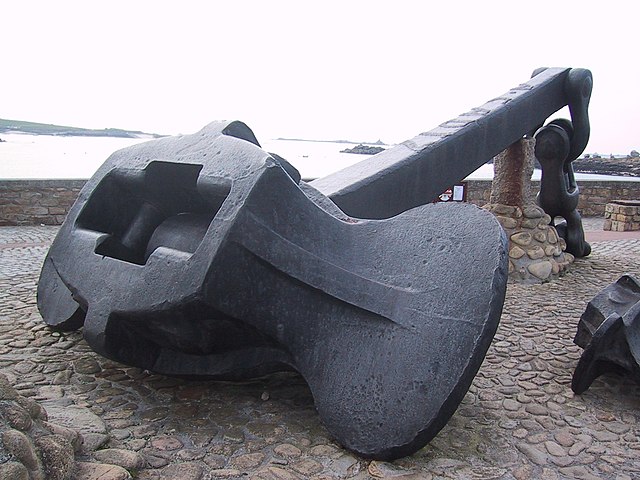Stockless_anchor
Stockless anchor
Type of anchor
A stockless anchor (or "patent anchor") is a streamlined derivation of the traditional Admiralty anchor used aboard large ships. Patented in England in 1821,[1] it eliminated the stock of the Admiralty, making it both easier to handle and stow. Though it did not hold as well as an Admiralty, the trade-off proved acceptable and the stockless anchor became widely popular, and it remains so.
This article needs additional citations for verification. (June 2018) |

